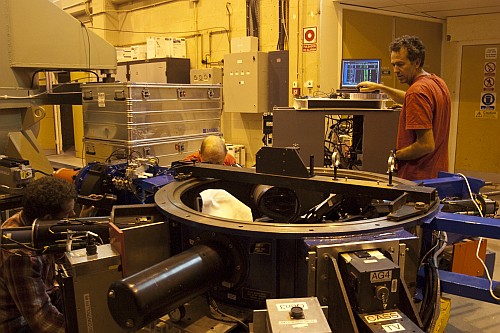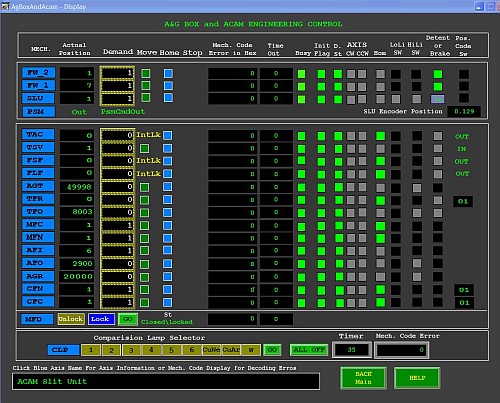PLC Technology Reduces Observing Overheads
ING web news release
19 November, 2010
New control systems are being implemented for all the instruments on
the 4.2-m William Herschel Telescope. The new systems are based on
PLC (programmable logic controllers) and Ethernet technology,
and are faster, and much easier to maintain, than the old 4MS/RS232
systems originally implemented
at the telescope over 20 years ago. The re-engineering is all being
carried out in-house at ING.
From the observer's point of view, the changes are transparent,
but several slow-moving mechanisms now move much faster than they
used to.
For example, observers using the ISIS instrument will no longer
have to wait a full minute to switch between slit-view and
arc-calibration modes.
This switch now takes just 15 seconds.
 |
ING engineer Carlos Martín testing PLC control
of the WHT's Cassegrain acquisition and guiding unit. [ JPEG | TIFF ].
|
The Cassegrain acquisition and guiding unit (autoguider, calibration
lamps, etc.), PFIP and ACAM instruments, and the GLAS dichroic changer all now run under PLC
control and the conversion of ISIS will take place shortly.
Conversion to PLC control is just one of several intiatives
aimed at maximising both the efficiency of observing at
night, and the reliability of the instrument-control systems.
Other initiatives include automatic target-acquisition tools for
ACAM and ISIS, and the conversion of UltraDAS camera servers and WHT ICS computers from Solaris to Linux PCs.
 |
|
Example PLC engineering-level user interface, providing straightforward control and status display for all mechanisms.
[ JPEG ].
|



